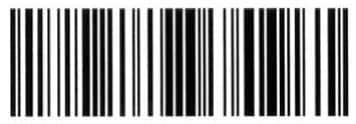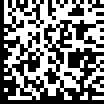Vaccine Two-Dimensional (2D) Barcodes
View the new Vaccine 2D Barcode Scanning Implementation Toolkit for resources and tools to support implementation in a variety of health care settings.
Two-dimensional (2D) barcodes are a modern data element that can represent more data per unit area by encoding it in two dimensions. There are many types of 2D barcodes to suit design requirements, as well as 2D barcode data encoding standards to facilitate data quality and barcode scanning technology compatibility and interoperability. CDC currently advises vaccine 2D barcodes of various types to use the GS1 General Specifications standard.
Vaccine 2D barcode scanning can replace manual entry of vaccine information to improve data accuracy and completeness and to support safe patient care.
Since 2011, CDC and its partners have explored the potential of 2D barcode scanning to streamline immunization practices and improve data quality.
These one-page briefs provide a description of vaccine 2D barcodes and benefits of scanning them during routine vaccinations [1 page] and during mass vaccinations [1 page].
Additional information on vaccine 2D barcodes and barcode scanning can be found on the following pages:
Why Do We Need 2D Barcoding?
The National Childhood Vaccine Injury Act (NCVIA), passed in 1986, requires documentation of vaccine product identification and vaccine lot number data. The American Academy of Pediatrics (AAP) recommends documenting vaccine expiration dates as well. These data were generally either handwritten or typed into an electronic medical record (EMR) system and/or immunization information systems (IIS) system. This manual entry resulted in missing or incorrect data within IIS and Vaccine Adverse Event Reporting System (VAERS) reports. Additionally, 2D barcodes can contain more information than linear barcodes in a smaller space. While linear barcodes currently only contain vaccine product identification information, vaccine 2D barcodes contain the vaccine product identification information, lot number, and expiration date.
The addition of a 2D barcode on vaccine products has allowed for rapid, accurate, and automatic capture of these data by a handheld imaging device, or scanner, which populates these fields in an EMR and/or an IIS. This automatic population, along with a data standard and health informatics technologies, enables a modern data practice from vaccine manufacture, to inventory, to administration, and record maintenance.

Linear Barcode
Vaccine Product Identification Only

2D Barcode
Vaccine Product Identification, Expiration Date, and Lot Number
2D Barcodes on Vaccine Information Statements (VIS)
All VIS have been modified to contain a 2D barcode with data such as the VIS type and the VIS publication date. Providers are also required to document the VIS publication date in patients’ health records. With these 2D barcodes, providers have the potential to scan the VIS information directly into the patients’ electronic medical record. For more detailed information, go to the 2D Barcodes on Vaccine Information Statements web page.